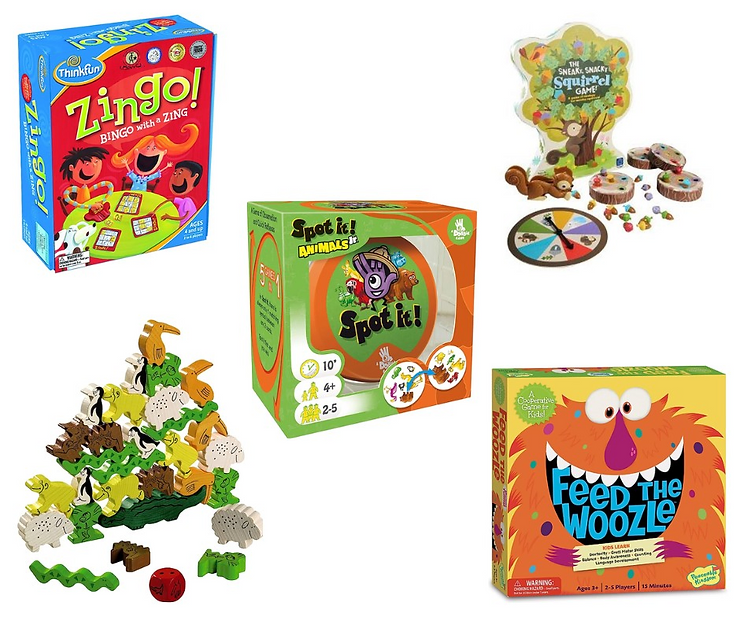11 Best Tips For Potty Training An Autistic Child

This post may contain affiliate links and I could earn a small commission at no cost to you. However, I will never recommend anything that I do not believe in or use myself. You can read more about my disclosure policy here.
Potty training is a significant milestone that all children reach in their own time. While it can be a challenging process for any parent, it may present unique difficulties when potty training an autistic child.
Autism spectrum disorder (ASD) influences how individuals process information and interact with the world, affecting their ability to grasp and adapt to new routines.
It’s important to remember that if your child takes longer to achieve potty training than their neurotypical peers, that’s absolutely okay. What truly matters is that your child feels safe, supported, and loved throughout the process.
Potty training an autistic child follows a similar path to potty training any other child. It’s essential to discover what works best for your child and provide them with the extra time and support they need to adapt to this new experience.
In this post, I will share effective strategies and tips that I personally used with my autistic child during his potty training journey. By incorporating these techniques, you can create an environment that promotes learning, comfort, and growth for your autistic child.
11 Tips for Potty Training an Autistic Child
1. Use Social Stories and Role Play
Introducing social stories and role-playing activities can significantly improve the potty training experience for autistic children. Social stories, which are narrative tools, help them understand and prepare for new experiences.
To begin, create a personalized social story that explains the step-by-step process of using the toilet, utilizing simple language and visual aids. Moreover, engage in pretend play or role-playing activities to familiarize your child with the routine in a fun and interactive way.
To initiate the potty training process, I started by using social stories that provided a clear explanation of each step involved. Observing bathroom visits by myself or his siblings, I would walk my son through the process, gauging his interest and readiness to try it himself.
The goal was to create a comfortable and pressure free environment while familiarizing him with the concept of using the potty.
2. Start at the Right Time
Choosing the right time to commence potty training is crucial. It’s essential to be attentive to signs of readiness, such as showing an interest in the bathroom, displaying awareness of bodily functions, or staying dry for longer periods. Commencing potty training at the opportune moment increases the likelihood of success.
In my experience, I waited until my son was a little older, seemed more aware, better able to communicate and follow instructions, and genuinely interested in the potty before initiating the potty training process.
The next step involved encouraging him to sit on the toilet. Initially, the focus was on getting him acquainted with the idea of sitting there, without expecting immediate results. To make it more engaging, I would read his favorite books or sing songs, providing distractions to keep him seated for a while.
Our household had a particular fondness for the book Everyone Poops, which is just one of the numerous children’s books centered around the topic of toileting.
3. Use Sign Language
Using sign language and having a sign for the child to use when they need to use the potty can be incredibly beneficial when potty training an autistic child. Autistic individuals often face challenges with verbal communication, and incorporating sign language can provide them with an alternative means of expression.
By introducing a sign specifically for using the potty, you create a visual cue that helps your child communicate their needs effectively.
In my personal experience, I recognized the importance of incorporating sign language into our potty training journey as my son struggled to verbally communicate his needs consistently. I communicated with my child’s speech therapist and informed them about our potty training efforts. Together, we worked collaboratively to teach and reinforce a sign for using the potty.
The specific sign we chose was not as crucial as ensuring that everyone involved, including family members and caregivers, knew and used the sign consistently. This consistency helped create a reliable communication system that enabled my child to express their need to use the toilet effectively.

To sign potty, make your hand into a fist, with your thumb peeking out between the bent index and middle fingers. This is the ASL letter sign for ‘T’ (as in, toilet). Hold the fist out and shake it around a little. It is like your baby is ringing a bell to let you know it is potty time. Credit babysignlanguage.com.
4. Create a Visual Schedule
Creating a visual schedule is invaluable when it comes to supporting individuals with autism. Visual aids offer structure and aid in understanding.
Develop a visual schedule that outlines the steps involved in using the toilet, from entering the bathroom to washing hands. Use pictures, icons, or words based on your child’s communication skills to help them comprehend and follow the process.
To implement this, I placed a poster on the wall next to the toilet, clearly sequencing the steps of how to use the potty. The Autism Potty Schedule below is great, breaking down each small step with simple words and visuals.
As we initiated each step, we would say it aloud. As my son grew more confident and accustomed to using the potty, I would have him practice verbalizing the steps as he executed them, with me always there to assist. Additionally, I placed a poster over the sink, guiding the steps of handwashing.

5. Establish a Consistent Routine
Establishing a consistent routine is essential, as autistic children thrive on predictability and routine. By setting specific times throughout the day for bathroom breaks, you can help your child anticipate and prepare for using the toilet.
Guide them to the bathroom during these intervals, gradually increasing the time between visits as they become more at ease and confident.
In my case, I noticed that my son resisted using the potty when I had him go too often. Therefore, I suggest experimenting with different frequencies and observing what works best for you and your child. Remember, the key is to create a comfortable and pressure free environment.
6. Create a Sensory Friendly Environment
Modifying the physical environment can contribute to a more comfortable potty training experience for autistic children. Consider sensory processing challenges or sensory sensitivities and adjust the lighting, temperature, or noise levels in the bathroom to create a calm and soothing atmosphere.
You may also introduce a comfortable child-sized toilet seat or a footstool to ensure your child feels secure and supported. Since my child has difficulty with transitions and changes, I opted not to use a child sized potty. I didn’t want him to get accustomed to using a child sized potty and then have to transition to a regular one.
Instead, I chose a child sized toilet seat that provided the necessary support. My child liked this cute child sized potty seat that could be folded up and carried with us on outings as well.
Eventually, we decided to install toilet seats with built-in child sized seats throughout our house for the convenience of all our children. We chose this toilet seat with a magnet that holds up the child sized seat when not in use. Additionally, I placed this slip resistant stool in the bathroom to facilitate getting on and off the toilet seat.
Related: Common Warning Signs Of Sensory Processing Disorder In Kids
7. Utilize Positive Reinforcement
Positive reinforcement is a powerful motivator for autistic children. Celebrate and reward even the smallest steps toward successful toilet use. Offer praise, verbal encouragement, or utilize a reward system such as stickers or small treats to reinforce positive behavior. Focus on the process rather than the outcome, emphasizing the progress they make rather than any setbacks.
To incentivize my son, I employed praise, verbal encouragement, a potty training sticker chart, and small candies for positive reinforcement. My child loved this potty training sticker chart as he could choose different cute animal stickers to place on his chart.
Since my child doesn’t frequently consume candy, receiving a few M&Ms or gummy bears as a reward was incredibly exciting for him. I would offer a sticker or treat as long as he made an effort to use the potty and followed the steps on the visual guide.
However, if he actually succeeded in using the potty, I would make a significant celebration out of it. Clapping, cheering, and high-fiving became part of the excitement, involving anyone else present in the house.
Related: Positive Affirmations For Autistic Children You Need To Know
8. Ditch the Diaper
Diapers can inadvertently hinder the process of potty training by masking the sensation of wetness from toileting accidents. Their super-absorbent nature creates a dry and comfortable environment, making it difficult for children to recognize the discomfort associated with a wet diaper.
This lack of awareness can delay their understanding of the need to use the toilet, as they do not experience the consequences of wetting themselves. As a result, it becomes crucial to transition away from diapers when the time is right, allowing children to develop a natural connection between the feeling of wetness and the need to use the toilet.
Personally, I made the decision to hold off on ditching the diaper until I believed my child was able to hold his pee and poop for longer periods. I also wanted to ensure that he had a solid understanding of how to use the toilet effectively, was able to follow visual cues and communicate his need to go verbally or using sign language.
Only when I felt confident in his abilities did I attempt to remove the diaper. However, it’s essential to be prepared for accidents once the diaper is no longer in use, as the transition can be challenging for children.
Putting a diaper over their underwear can also be helpful while potty training, as it provides an added layer of protection against accidents while still allowing the child to feel the wetness, aiding in the learning process.

9. Be Prepared for Going Out in Public
When venturing out in public during the potty training phase, I still kept my child in a diaper until he was comfortable and able to communicate his needs effectively, consistently using the toilet at home when necessary.
Once we ditched the diaper, I carried a child-sized potty in the trunk for emergencies while on the road. We liked this travel potty when on the go. Always be prepared for accidents when going out by carrying extra clothes and wipes to address any unforeseen mishaps.
Furthermore, to alleviate the potential distress caused by loud public toilets, I would ensure my son knew when the flush was about to occur. I would carry sticky notes in my purse to covered the sensor of automatic flushers, allowing time to provide adequate warning before the flush.

Related: How to Calm Autistic Meltdowns: 7 Tips that Work
10. Be Patient and Adaptable
Patience and adaptability are key throughout the potty training journey for autistic children. Maintaining a positive and encouraging attitude when accidents occur is crucial.
Remember, potty training can be a lengthy process, requiring an abundance of patience and flexibility. Each child develops at their own pace and may face individual challenges along the way.
Stay calm, supportive, and prepared to adjust your approach as needed. Celebrate the small victories and maintain a positive attitude throughout the journey.
11. Take a Break If Needed
It is important to recognize that every child progresses at their own pace, and potty training can sometimes be challenging for autistic children. If your child is struggling to grasp the concept or exhibiting signs of distress, such as holding their bowels, it may be beneficial to take a break from potty training for a little while.
Pushing forward when your child is not ready or experiencing significant distress can create additional stress and setbacks. By pausing the potty training process, you give your child an opportunity to relax, reset, and recharge. This break allows them to regain their confidence and readiness at their own pace, without feeling overwhelmed or pressured.
During this break, focus on maintaining a positive and supportive environment. Continue to encourage open communication with your child’s speech therapist, teacher, or other professionals involved in their care. They can provide guidance and support to address any challenges or concerns you may have.
Remember, taking a break is not a failure; it is a strategic approach to ensure your child’s well-being and pave the way for a more successful potty training experience when they are ready to resume.
Final Thoughts
Every child develops at their own pace, and setbacks are a normal part of the process. Celebrate the small victories and maintain a positive attitude throughout the process of potty training your autistic child.
By providing a comfortable and pressure free environment, utilizing effective tools and techniques, and being attentive to your child’s cues, you can help them achieve success in potty training.
Empower your child to reach this important milestone and pave the way for further growth and independence.
Recommended
- Common Warning Signs Of Sensory Processing Disorder In Kids
- 25 Ways Life Looks Different Parenting an Autistic Child
- How to Calm Autistic Meltdowns: 7 Tips that Work






